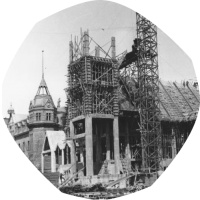The organ
To accommodate the organ and choir space recovered from the former Presbyterian church, the second-floor organ loft was added by Lucien Parent during the reconstruction of the building in 1930. The organ had previously been located in the center of the church, in the chancel. It is a Warren organ from 1868, modified and enhanced by the addition of the Mitchell organ from St. Andrew’s Church in 1919.
To prepare for its installation in the chapel of the College, Casavant Frères from Saint-Hyacinthe dismantled the organ in 1930 and completely rebuilt it. The instrument was restored and enhanced to a total of 5,459 pipes and 81 pipe organ stops*. By comparison, the organ in St. Joseph’s Oratory, which ranks among the 10 most prestigious organs in the world, has 5,811 pipes and 78 organ stops!
Several famous organists have played this imposing instrument, whose pipes reach into the four corners of the building. Silent since the early 1970s, it was once considered one of the most versatile instruments in Canada.
The oak cases topped with floret arrows, a botanical ornament, were designed by Lucien Parent, the architect in charge of moving and rebuilding the chapel.
Finally, for safety reasons, a railing was added to the organ loft in 1998.
*An organ stop is a row of organ pipes used to create a particular sound, more appropriately known as a rank.






